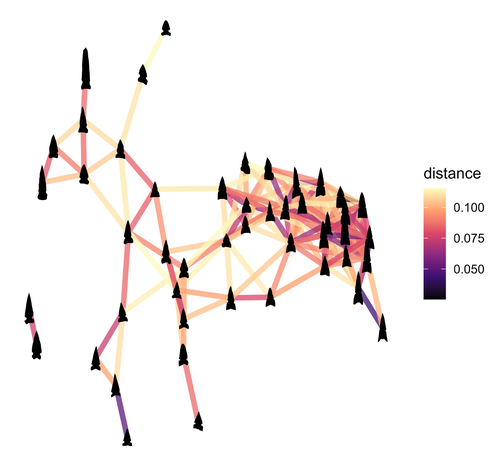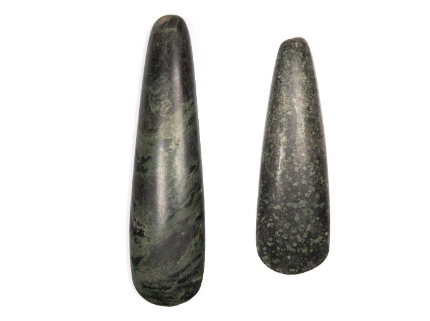
BURKE Adrian L.
- Département d'anthropologie, Université de Montréal, Montréal, Québec, Canada
- Archaeometry, Geoarchaeology, Lithic technology, North America, Raw materials
- recommender
Recommendation: 1
Review: 1
Recommendation: 1

Geometric Morphometric Analysis of Projectile Points from the Southwest United States
2D Geometric Morphometrics of Projectile Points from the Southwestern United States
Recommended by Adrian L. Burke based on reviews by James Conolly and 1 anonymous reviewerBischoff (2023) is a significant contribution to the growing field of geometric morphometric analysis in stone tool analysis. The subject is projectile points from the southwestern United States. Projectile point typologies or systematics remain an important part of North American archaeology, and in fact these typologies continue to be used primarily as cultural-historical markers. This article looks at projectile point types using a 2D image geometric morphometric analysis as a way of both improving on projectile point types but also testing if these types are in fact based in measurable reality. A total of 164 point outlines are analyzed using Elliptical Fourier, semilandmark and landmark analyses. The author also uses a network analysis to look at possible relationships between projectile point morphologies in space. This is a clever way of working around the predefined distributions of projectile point types, some of which are over 100 years old. Because of the dynamic nature of stone tools in terms of their use, reworking and reuse, this article can also provide solutions for studying the dynamic nature of stone tools. This article therefore also has a wide applicability to other stone tool analyses.
Reference
Bischoff, R. J. (2023) Geometric Morphometric Analysis of Projectile Points from the Southwest United States, SocArXiv, a6wjc, ver. 8 peer-reviewed and recommended by Peer Community in Archaeology. https://doi.org/10.31235/osf.io/a6wjc
Review: 1

Hafted stone and shell tools in the Asia Pacific Region
From Polished Stone Tools to Population Dynamics: Ethnographic Archives as Insights
Recommended by Solène Denis based on reviews by Adrian L. Burke and 1 anonymous reviewerMost archaeological contexts provide objects without organic materials making them quite silent regarding their hafting techniques and use. This is especially true for the polished stone tools that only thanks to a few discoveries in a wet environment, we can obtain some insights regarding their hafting techniques. Use-wear analysis can also be of some support to get a better picture of these artefacts (e.g. Masclans Latorre 2020), whose typology testifies to an important diversity in European Neolithic contexts that sometimes are well-documented from the chaîne opératoire perspective (see De Labriffe and Thirault dir. 2012).
The study offered by Chris Buckley (2023) constitutes an important contribution to animating these tools. His work relies on the Asia Pacific region, where he gathered data and mapped more than 300 ethnographic hafted stone and shell tools. This database is available on a webpage https://www.google.com/maps/d/u/0/viewer?mid=1D_sC7VUtQRuRcCgc9rROVU7ghrdiVAg&ll=-2.458804534247277%2C154.35254980859378&z=6, providing a short description and pictures of some of the items, completed by Supplementary data.
Thanks to this important record of entire objects, the author presents the different possibilities regarding hafting styles, blade orientations and attachment techniques. The combination of these different characteristics led the author to the introduction of a dynamic typology based on the concept of ‘morphospace’. Eight types have been so identified for the Asia Pacific region.
The geographical distribution of these types is then presented and questioned, bringing also to the forefront some archaeological findings. An emphasis is made on New Guinea island where documentation is important. We can mention the emblematic work of Anne-Marie and Pierre Pétrequin (1993 and 2020) focused on West Papua, providing one of the most consulted books on stone axes by archaeologists.
The worthy explanations tested to understand this repartition mobilize archaeological or linguistic data to hypothesise a three waves model of innovations in link with agricultural practices. A discussion on the correlation between material culture and language highlights in the background the need for interdisciplinary to deal finely with these interactions and linkages as has been effectively demonstrated elsewhere (Hermann and Walworth 2020).
To conclude, the convergence between European Neolithic and New Guinea polished stone tools is demonstrated here through ‘morphospace’ comparisons. Thanks to this study, the polished stone tools come alive more than any European archaeological context would allow. The population dynamics investigated through these tools are directly relevant to current scientific issues concerning material culture. This example of convergent evolution is therefore an important key to considering this article as a source of inspiration for the archaeological community.
References
Buckley C. (2023). Hafted Stone and Shell Tools in the Asia Pacific Region, PsyArXiv, v.3 peer-reviewed and recommended by Peer Community in Archaeology. https://doi.org/10.31234/osf.io/8cwa2
De Labriffe A., Thirault E. dir. (2012). Produire des haches au Néolithique, de la matière première à l’abandon, Paris, Société préhistorique française (Séances de la Société préhistorique française, 1).
Hermann A., Walworth M. (2020). Approche interdisciplinaire des échanges interculturels et de l’intégration des communautés polynésiennes dans le centre du Vanuatu, Journal de la Société des Océanistes, 151, 239-262. https://doi-org.docelec.u-bordeaux.fr/10.4000/jso.11963
Masclans Latorre A. (2020). Use-wear Analyses of Polished and Bevelled Stone Artefacts during the Sepulcres de Fossa/Pit Burials Horizon (NE Iberia, c. 4000–3400 cal B.C.), Oxford, BAR Publishing (BAR International Series 2972).
Pétrequin P., Pétrequin A.-M. (1993). Écologie d'un outil : la hache de pierre en Irian Jaya (Indonésie), Paris, CNRS Editions.
Pétrequin P., Pétrequin A.-M. (2020). Ecology of a Tool: The ground stone axes of Irian Jaya (Indonesia). Oxbow Books.